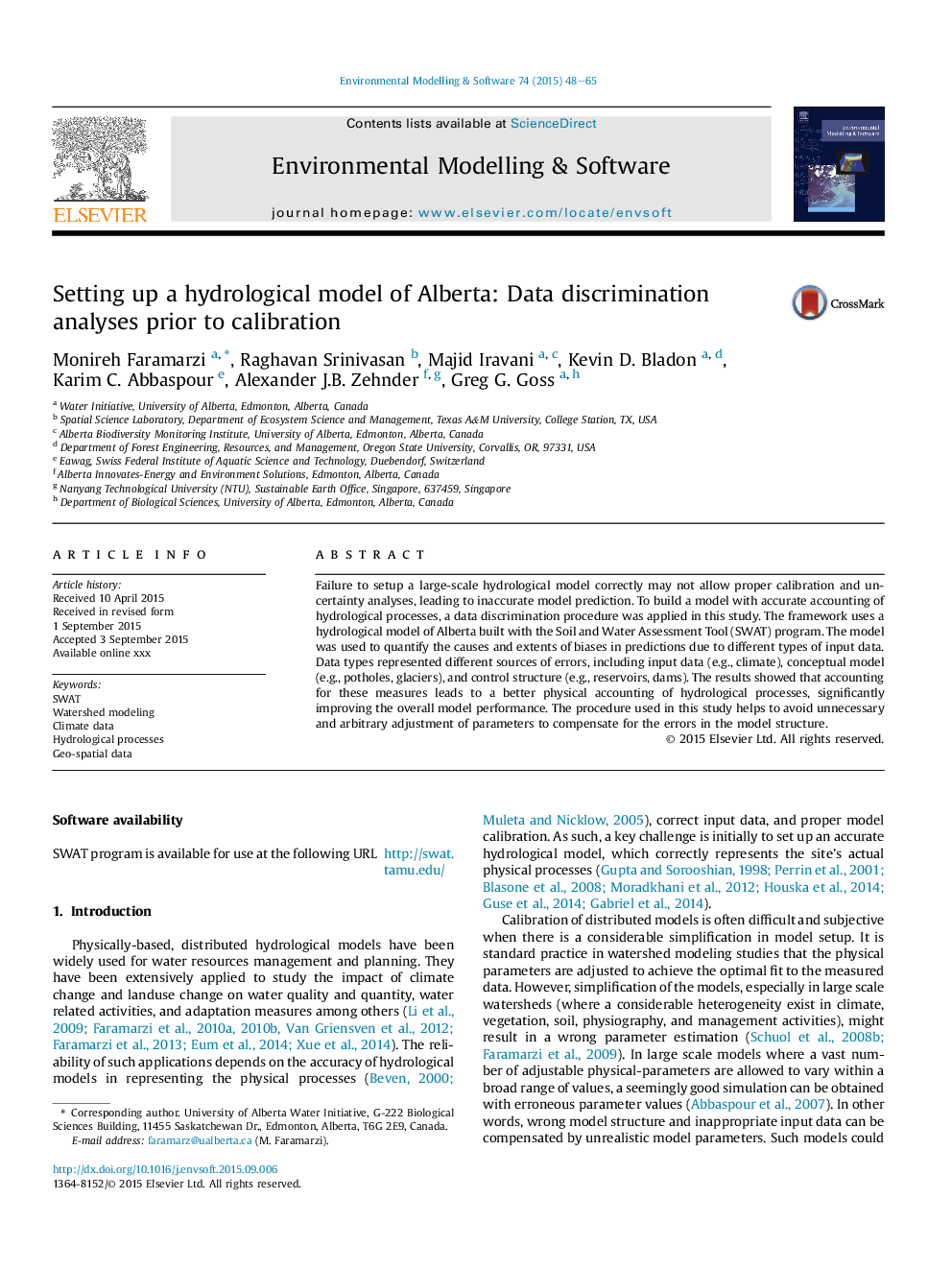| Article ID | Journal | Published Year | Pages | File Type |
|---|---|---|---|---|
| 6962800 | Environmental Modelling & Software | 2015 | 18 Pages |
Abstract
Failure to setup a large-scale hydrological model correctly may not allow proper calibration and uncertainty analyses, leading to inaccurate model prediction. To build a model with accurate accounting of hydrological processes, a data discrimination procedure was applied in this study. The framework uses a hydrological model of Alberta built with the Soil and Water Assessment Tool (SWAT) program. The model was used to quantify the causes and extents of biases in predictions due to different types of input data. Data types represented different sources of errors, including input data (e.g., climate), conceptual model (e.g., potholes, glaciers), and control structure (e.g., reservoirs, dams). The results showed that accounting for these measures leads to a better physical accounting of hydrological processes, significantly improving the overall model performance. The procedure used in this study helps to avoid unnecessary and arbitrary adjustment of parameters to compensate for the errors in the model structure.
Related Topics
Physical Sciences and Engineering
Computer Science
Software
Authors
Monireh Faramarzi, Raghavan Srinivasan, Majid Iravani, Kevin D. Bladon, Karim C. Abbaspour, Alexander J.B. Zehnder, Greg G. Goss,
